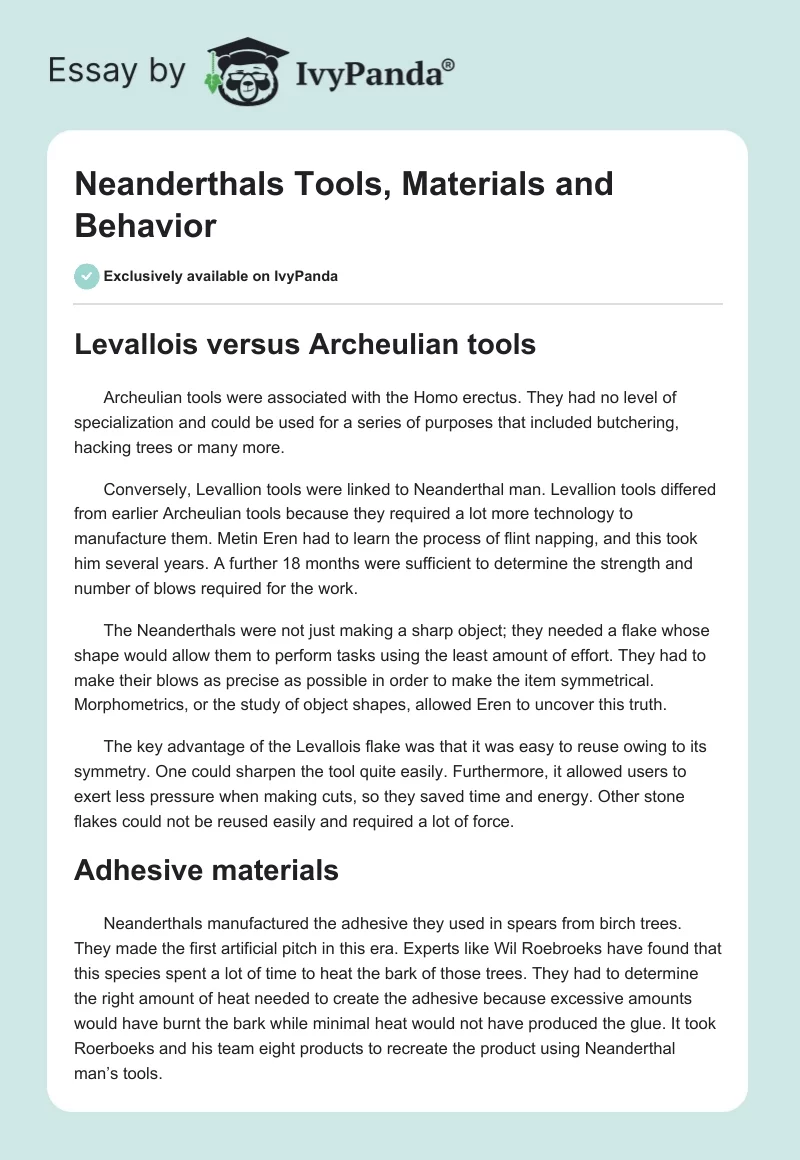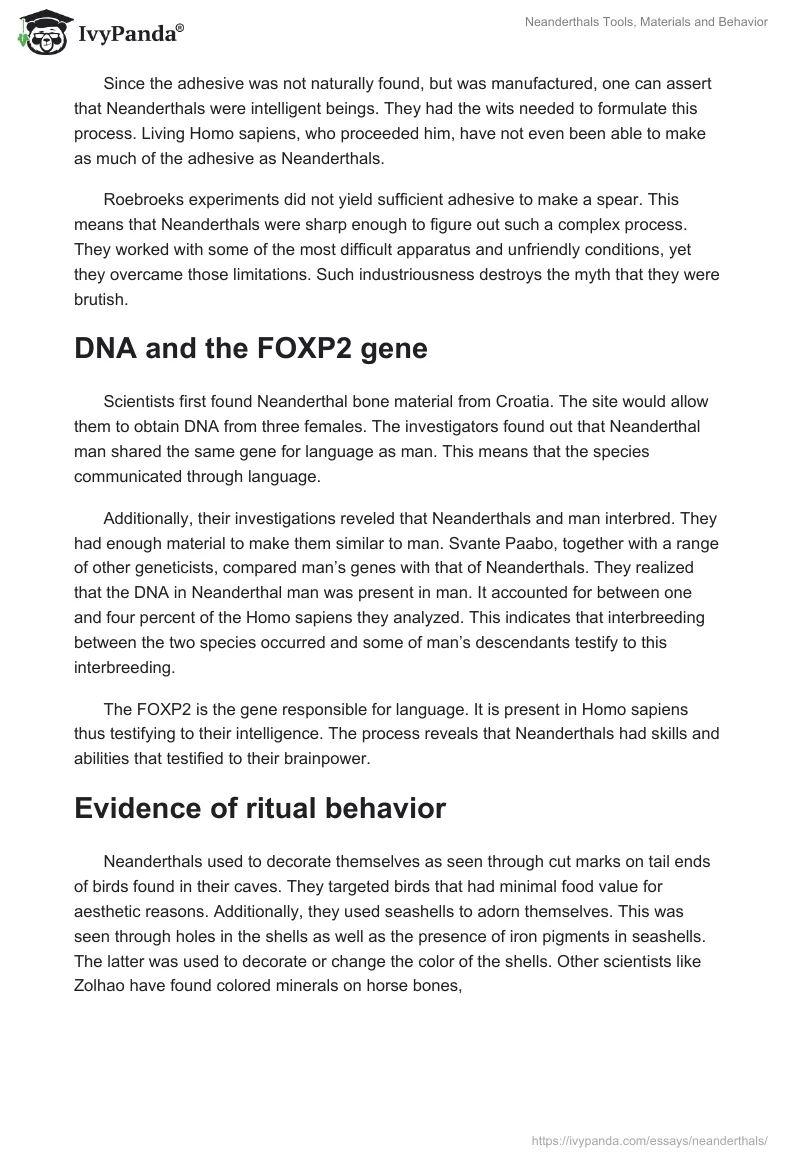Levallois versus Archeulian tools
Archeulian tools were associated with the Homo erectus. They had no level of specialization and could be used for a series of purposes that included butchering, hacking trees or many more.
Conversely, Levallion tools were linked to Neanderthal man. Levallion tools differed from earlier Archeulian tools because they required a lot more technology to manufacture them. Metin Eren had to learn the process of flint napping, and this took him several years. A further 18 months were sufficient to determine the strength and number of blows required for the work.
The Neanderthals were not just making a sharp object; they needed a flake whose shape would allow them to perform tasks using the least amount of effort. They had to make their blows as precise as possible in order to make the item symmetrical. Morphometrics, or the study of object shapes, allowed Eren to uncover this truth.
The key advantage of the Levallois flake was that it was easy to reuse owing to its symmetry. One could sharpen the tool quite easily. Furthermore, it allowed users to exert less pressure when making cuts, so they saved time and energy. Other stone flakes could not be reused easily and required a lot of force.
Adhesive materials
Neanderthals manufactured the adhesive they used in spears from birch trees. They made the first artificial pitch in this era. Experts like Wil Roebroeks have found that this species spent a lot of time to heat the bark of those trees. They had to determine the right amount of heat needed to create the adhesive because excessive amounts would have burnt the bark while minimal heat would not have produced the glue. It took Roerboeks and his team eight products to recreate the product using Neanderthal man’s tools.
Since the adhesive was not naturally found, but was manufactured, one can assert that Neanderthals were intelligent beings. They had the wits needed to formulate this process. Living Homo sapiens, who proceeded him, have not even been able to make as much of the adhesive as Neanderthals.
Roebroeks experiments did not yield sufficient adhesive to make a spear. This means that Neanderthals were sharp enough to figure out such a complex process. They worked with some of the most difficult apparatus and unfriendly conditions, yet they overcame those limitations. Such industriousness destroys the myth that they were brutish.
DNA and the FOXP2 gene
Scientists first found Neanderthal bone material from Croatia. The site would allow them to obtain DNA from three females. The investigators found out that Neanderthal man shared the same gene for language as man. This means that the species communicated through language.
Additionally, their investigations reveled that Neanderthals and man interbred. They had enough material to make them similar to man. Svante Paabo, together with a range of other geneticists, compared man’s genes with that of Neanderthals. They realized that the DNA in Neanderthal man was present in man. It accounted for between one and four percent of the Homo sapiens they analyzed. This indicates that interbreeding between the two species occurred and some of man’s descendants testify to this interbreeding.
The FOXP2 is the gene responsible for language. It is present in Homo sapiens thus testifying to their intelligence. The process reveals that Neanderthals had skills and abilities that testified to their brainpower.
Evidence of ritual behavior
Neanderthals used to decorate themselves as seen through cut marks on tail ends of birds found in their caves. They targeted birds that had minimal food value for aesthetic reasons. Additionally, they used seashells to adorn themselves. This was seen through holes in the shells as well as the presence of iron pigments in seashells. The latter was used to decorate or change the color of the shells. Other scientists like Zolhao have found colored minerals on horse bones,
Evidence also exists on Neanderthals’ burials of the dead. Some bones were found in Spain; they were in a fetal position. Their hands were close to their chest, and rocks covered them in a manner that indicated intent. This implies that they buried their dead.
Neanderthals similarity to man
John Hawks found that the degree to which Neanderthal genes were present in man differed from geographical area to geographical area. Homo sapiens from Europe had a much higher level of Neanderthal genes than say the Chinese. This indicates that interbreeding took place depending on where the two species interacted the most. The least interbreeding took place in Africa and China while the most was in Tuscany Italy.
Neanderthals may have become extinct as a result of absorption by a distinct species. The process took a relatively long time because interbreeding between the species was a prolonged event. Therefore, it is the breeding of these species that led to their extinction rather than the sudden elimination of Neanderthals. Many scientists assume that they were simply wiped out by a superior group. However, it is the outnumbering process that led to their elimination.


